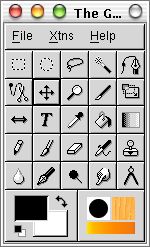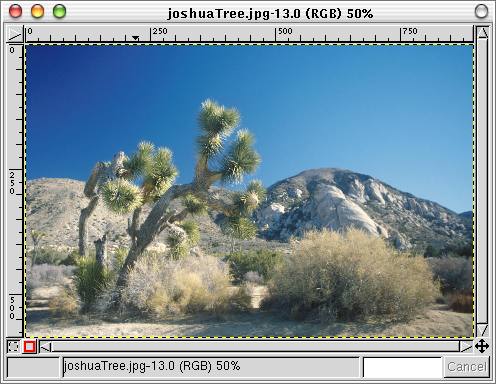Chapter 2. Adding Text to an Existing Image
Loading an Image in the GIMP
Start the GIMP. If this is your first time running the GIMP, you'll be walked through setting up the configuration files - accepting the defaults works well. You'll also be asked to calibrate the screen. You can either accept the defaults again, or you can get out a ruler and measure a ruler the GIMP puts up on screen. I recommend this, but unless you have an unusual screen or need very accurate on-screen representation, it probably isn't necessary.
The GIMP usually starts several windows when it runs. Look for the one pictured below, which is the main panel.

The GIMP main panel.
Press "File" and select "Open." You'll be shown a GTK file selection panel - some Windows users find this a little different, but it's use should be fairly straight-forward to any Linux user. Windows users should note that directories (including other drives) are in the left panel and files are in the right panel.
Open an existing image file you want to work with: the GIMP understands almost all image file formats in existence today (although it should be noted that because of patent encumberments some versions of the GIMP will no longer save in GIF format). We'll be making several modifications to this image - please save it under a different filename, don't overwrite your original! The modifications I'm going to work through may not improve your image, but you can try these changes to see how they work.
I've chosen an image of the Joshua Tree Monument I took about ten years ago:

An image window in the GIMP open on a scanned slide.
When you're working on an image, most of the menus you'll use are accessed by right-clicking on the image, NOT on the main panel. Use the panel to select tools, but get your menues by right-clicking on the image.